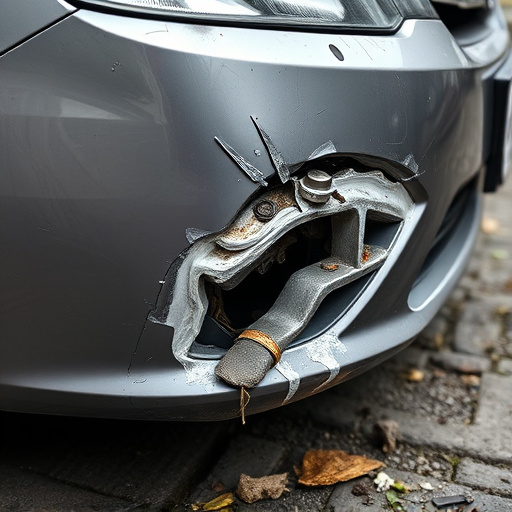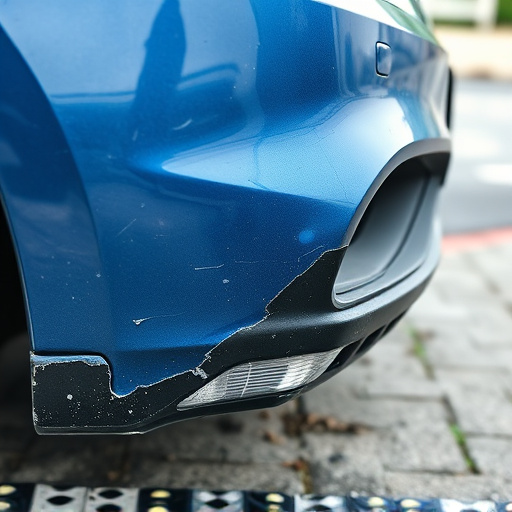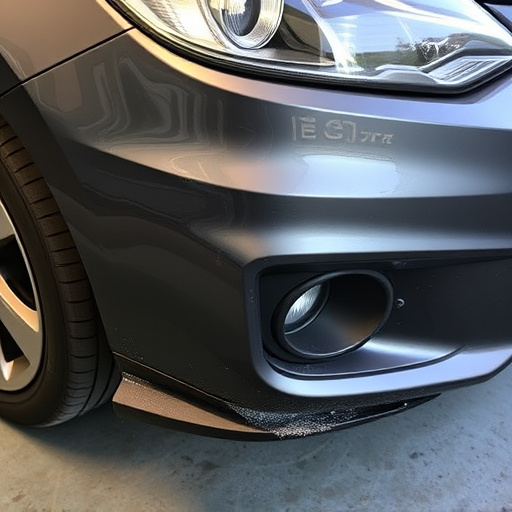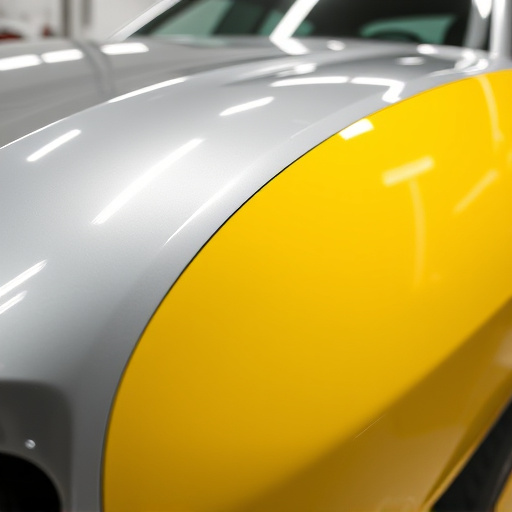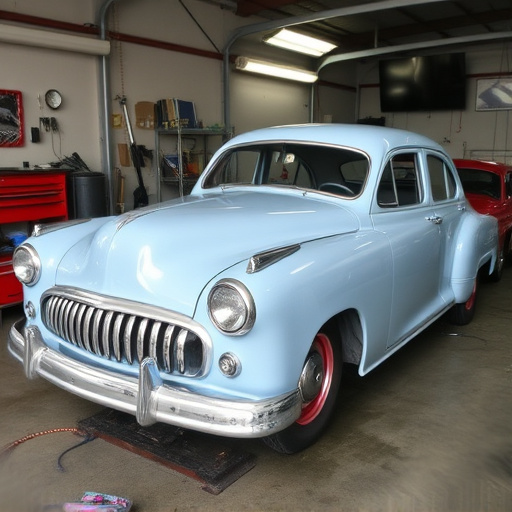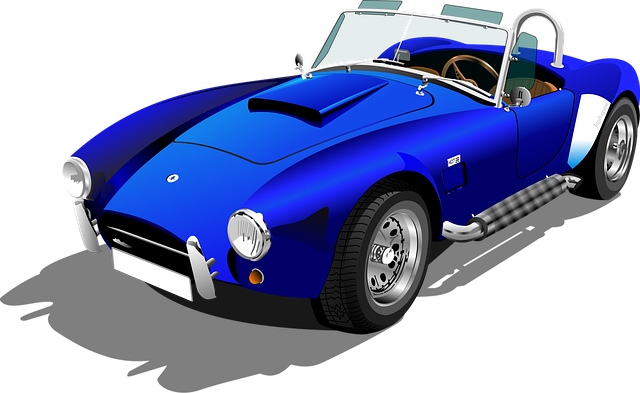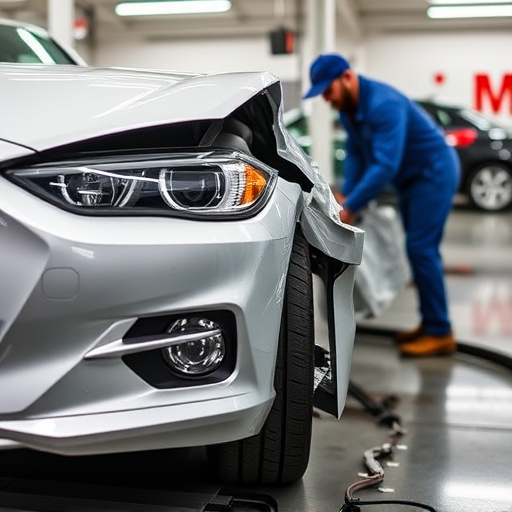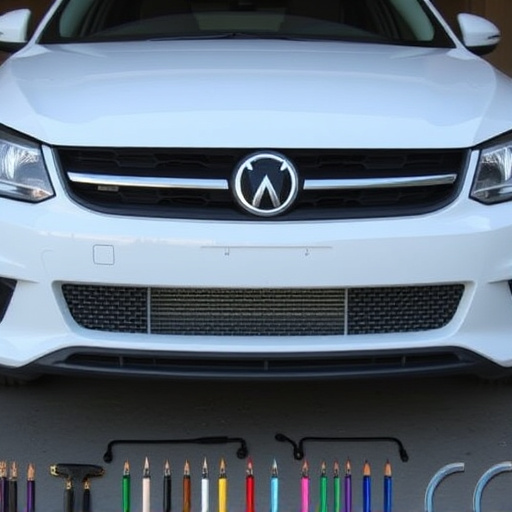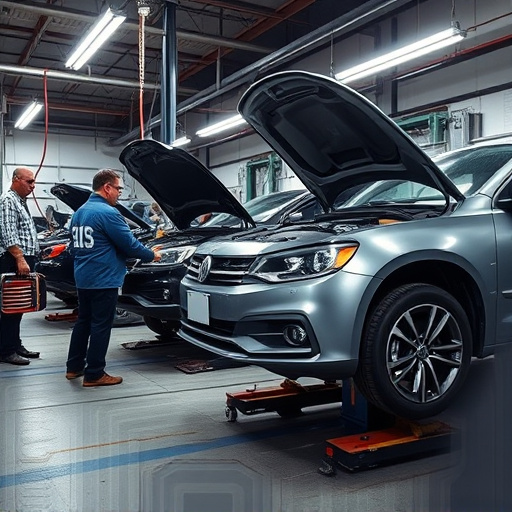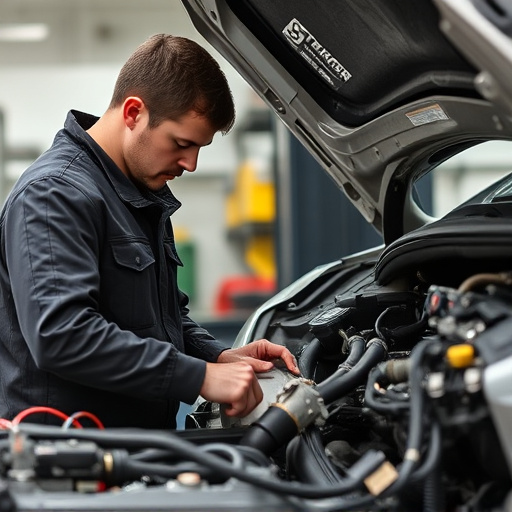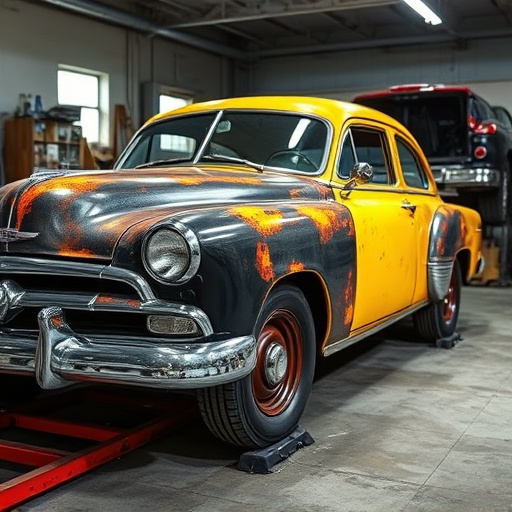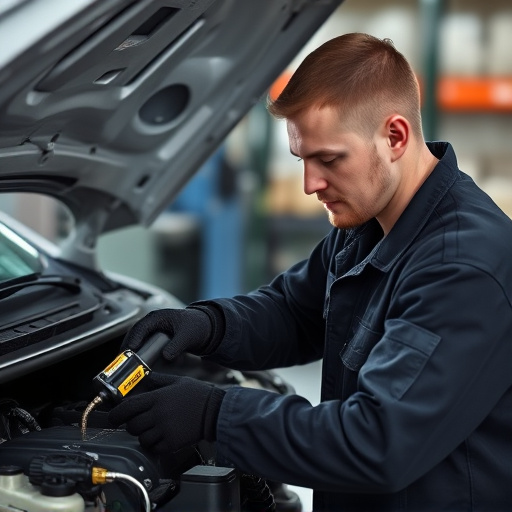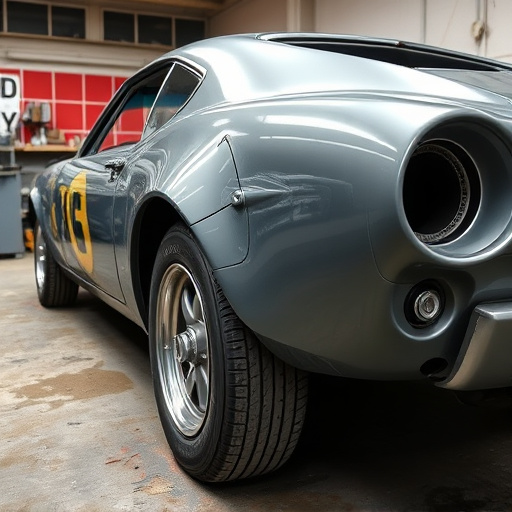PDR for door dings is a non-invasive car bodywork technique using specialized tools and trained technicians to gently manipulate dented areas back to their original shape, minimizing or eliminating paint damage on aluminum panels. This method conserves original factory finishes, enhances efficiency, and boosts customer satisfaction compared to invasive methods like welding or painting, making it ideal for modern cars with intricate designs. However, proper training and techniques are crucial for success, as improper use could cause scratches or further damage.
“Discover the innovative solution to aluminum panel damage with our comprehensive guide to PDR (Paintless Dent Repair) for door dings. This non-invasive technique revolutionizes auto repairs by removing dents without painting, preserving your vehicle’s original finish.
In this article, we demystify the process, explore the science behind its effectiveness on aluminum, and weigh the benefits and limitations. From understanding PDR’s precision to its environmental advantages, we’ll equip you with knowledge to make informed decisions for your dented door.”
- Understanding PDR: A Non-Invasive Repair Method
- The Science Behind Fixing Door Dings on Aluminum
- Benefits and Limitations: PDR for Aluminum Panels Practicality
Understanding PDR: A Non-Invasive Repair Method
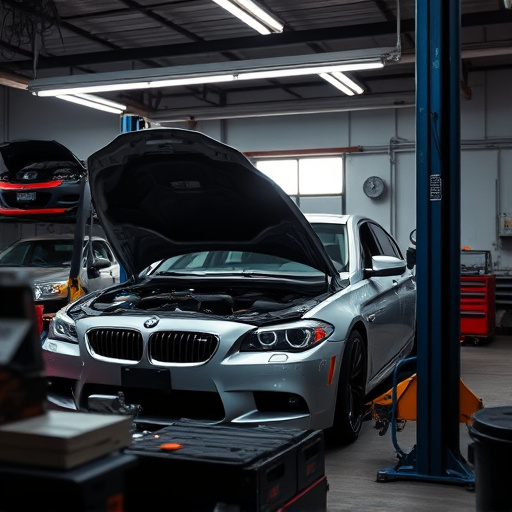
PDR, or Paintless Dent Repair, is a non-invasive repair method that has revolutionized car bodywork services, especially for minor dents and scratches, including those on aluminum panels. Unlike traditional repair methods that involve sanding, painting, and lengthy restoration processes, PDR conserves the original factory finish of a vehicle. This advanced technique is a game-changer in collision centers, offering a faster, more cost-effective solution without compromising quality.
By using specialized tools and trained technicians, PDR for door dings works by gently pushing and pulling the dented area back to its original shape. This process ensures minimal to no paint damage, making it ideal for modern cars with intricate designs and delicate finishes. As a result, customers can benefit from efficient collision repair services, saving time and money while maintaining the overall aesthetics of their vehicle’s bodywork.
The Science Behind Fixing Door Dings on Aluminum
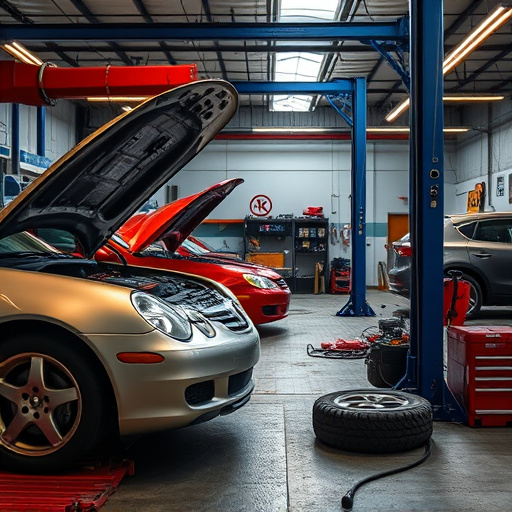
The process of Plastic Deformational Repair (PDR) for door dings on aluminum panels is a scientific marvel that has transformed auto repair shops and vehicle body shops alike. It leverages the inherent properties of metal to mend imperfections without invasive techniques like welding or painting. PDR for door dings involves specialized tools that gently press and reshape the aluminum, restoring it to its original form and smoothness. This method is not just efficient but also eco-friendly, as it reduces waste and minimizes the need for extensive auto maintenance.
Aluminum’s unique characteristics—its malleability and resistance to corrosion—make it a popular choice in modern car designs. PDR takes advantage of these qualities, ensuring that door dings are repaired effectively without compromising the panel’s structural integrity. This innovative approach has become a game-changer in the industry, providing customers with swift and high-quality solutions for their aluminum panel repairs, all within the confines of a reputable car repair shop or vehicle body shop.
Benefits and Limitations: PDR for Aluminum Panels Practicality
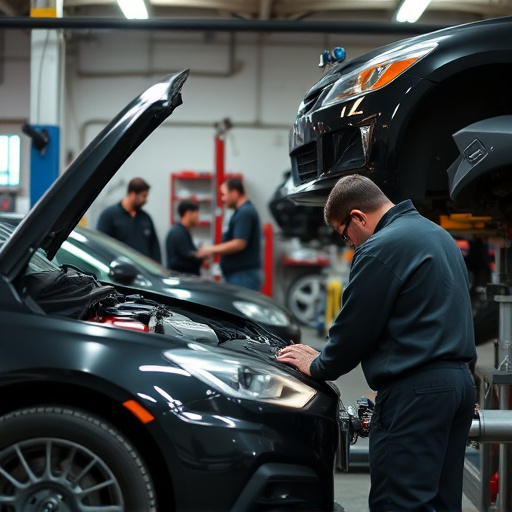
PDR for aluminum panels offers several benefits when it comes to PDR for door dings. Aluminum is a lightweight and durable material commonly used in modern vehicle construction, making it ideal for vehicle restoration and car dent repair. PDR techniques can effectively restore the original look of aluminum panels without the need for painting, saving time and costs associated with traditional collision repair services. The non-invasive nature of PDR ensures minimal damage to the panel, preserving its structural integrity.
However, there are certain limitations to consider. Aluminum has a tendency to dent more easily than steel due to its lower density, making it more susceptible to surface imperfections. While PDR can often fix shallow dents, deeply embedded or complex dings might require additional steps or even replacement panels. Moreover, the practicality of PDR for aluminum depends on the skill and experience of the technician; improper application could lead to scratches or further damage. Nonetheless, with proper training and tools, PDR remains a cost-effective and environmentally friendly solution for door ding repairs on aluminum vehicles.
PDR (Paintless Dent Repair) offers a non-invasive solution for repairing door dings on aluminum panels, making it a practical and environmentally friendly choice. By understanding the science behind this method and its benefits, car owners can make informed decisions when it comes to vehicle maintenance. While PDR has its limitations, especially with severe dents, it remains an excellent option for minor damage, ensuring cars look as good as new without the need for traditional repainting.
